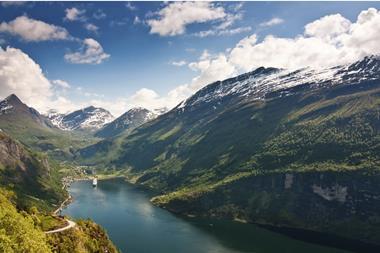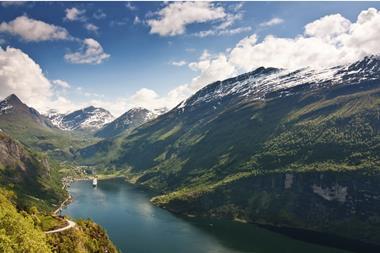Norway’s largest pension fund manager KLP has funded the construction of a solar farm in Rwanda, its first investment in the east African state.
The project, located to the east of the nation’s capital Kigali, is the first utility-scale, grid-connected commercial solar park in east Africa, costing $23.7m (€20.3m)
KLP part-funded the project through KLP Norfund Investments (KNI), a vehicle jointly owned by Norfund, the Norwegian government’s investment fund for developing countries. KNI was set up in 2013, in KLP’s case to increase its impact investments.
KNI is a majority owner of the park through its partnership with Scatec Solar, an integrated independent solar power producer which will oversee its operation. KNI owns 24% of the equity, Norfund 12.8% and Scatec Solar 43.2%, while the developers Gigawatt Global own 20%.
Further funding has come via debt and grants from international development agencies.
Eli Bleie Munkelien, vice president, corporate responsibility and corporate governance, KLP, said: “We see energy as key to development, and renewable energy equally essential for a sustainable development.
“Our co-investment with Norfund is commercially based, but with the aim on giving returns on a social and environmental level, as well as the financial dimension.”
By end-2014 KLP had invested NOK200m (€21.9m) in four renewable energy projects, the largest being the Lake Turkana wind project in Kenya, as well as solar parks in South Africa and Honduras.
Another NOK300m had also been allocated – NOK150m through NorFinance in bank and finance projects, so far in Kenya, Uganda and Mozambique, while the remaining NOK150m is awaiting allocation in new investment opportunities through KNI.
Last December, a further NOK500m was committed to investments in renewable energy, though it has not yet been allocated. KLP is currently looking into the different possibilities with regard to the preferred type of impact, partnerships and models.
KLP has also invested NOK97m in the Norwegian Microfinance Initiative which funds microfinance institutions in developing countries through equity, loans and guarantees intended to provide an attractive financial return as well as development results.
All these investments are defined by KLP as impact investments.
Munkelien said: “We use three tools to ensure KLP’s responsible investments: exclusion; active ownership, or dialogue; and investment for sustainable development.
“The last of these is what most people consider to be impact investing, though we have a broader definition.”
She added: “Given KLP’s investment model, which emphasises index tracking management, KLP seeks partners to put this mandate into operation.”
There is no target allocation for impact investment. But sustainable developments in developing economies form an important part of the renewable energy asset class.
However, Munkelien said: “There is a target return for impact investments, which vary from project to project. However, they are measured in environmental and social impact as well as financial returns. It is however too early to report on financial returns as they are long-term investments.”
KLP’s investment portfolio is worth NOK368bn, with KLP Group’s total assets standing at NOK470bn.








No comments yet